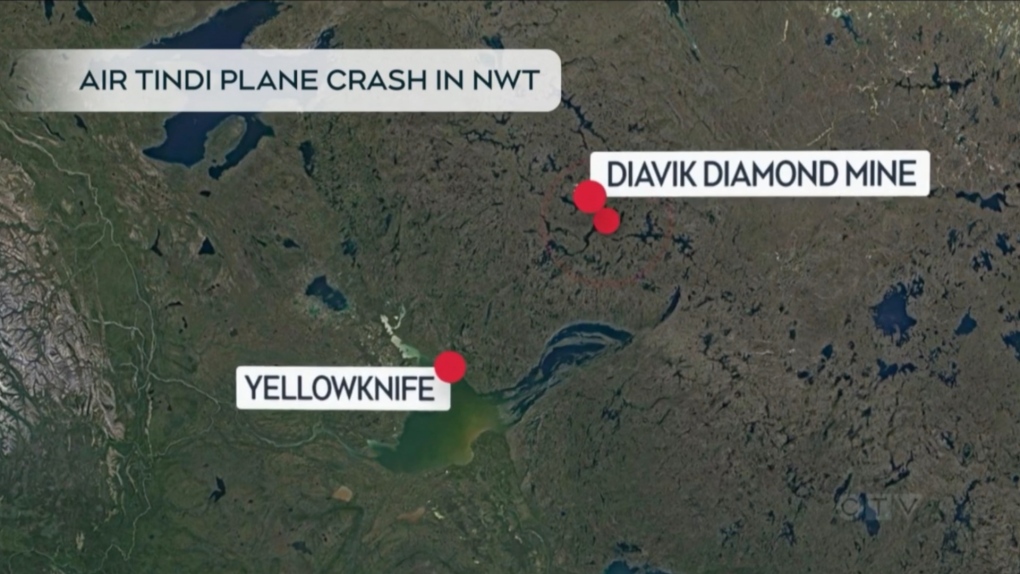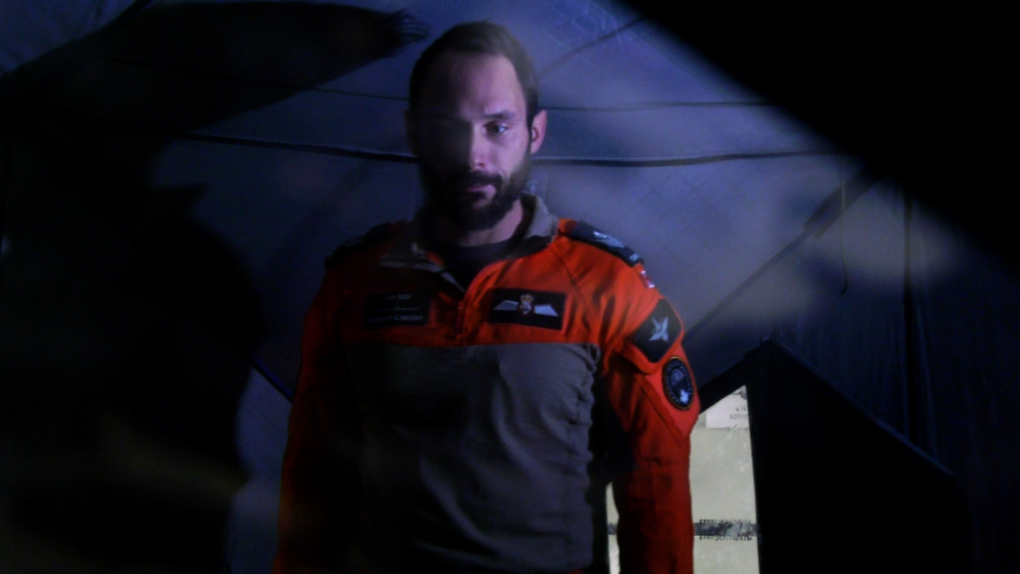Inside the RCAF mission to rescue 10 people in N.W.T. plane crash
Flying 2,000 feet above the frozen wilderness in the Northwest Territories, flares illuminated the sky as Sgt. Vincent CBenoit stood by the open bay doors of the Hercules aircraft and got ready to jump.
The Royal Canadian Air Force (RCAF) search and rescue technician was leading a crew from Winnipeg sent on a difficult and daring rescue mission on Dec. 27.
A privately chartered Air Tindi flight carrying 10 people - two pilots and eight passengers - went down in a remote area about 16 kilometres southeast of the Diavik diamond mine in the Northwest Territories.

According to the Transportation Safety Board of Canada, the Twin Otter plane had been chartered for winter road construction activities. Two people were seriously injured in the crash, while six others sustained minor injuries.
To reach the crash site, a crew of highly trained RCAF search and rescue technicians based in Winnipeg's 17 Wing was sent on the mission.
"That's what we do when we train on a regular day, except that this time the consequences were higher," CBenoit told CTV News.
The rescue required three crew members to parachute into the crash site with supplies and equipment from about 2,000 feet in the dark with 70 km/h winds.
They had the approximate location thanks to an emergency locator transmitter that had been activated in the downed plane.
When he jumped from the aircraft, CBenoit saw a sheet of snow blowing in the wind and then he saw the crash site.
"Initially we found six persons in a tent, they built a survival shelter," CBenoit said. "We made our way to the wreckage where four were still in it – two in more severe condition."
Shortly after their drop, CBenoit said emergency responders from the Diavik mine arrived by snowmobile to help as well. For the next 14 hours, the group of rescuers and rescuees huddled together in tents, providing care and sheltering from the blizzard conditions.
"It was a long night, but we exchanged a lot of stories and all the patients there were really good people and we were able to talk to them all night and care for them," CBenoit said.
 Royal Canadian Air Force Sgt. Vincent CBenoit, a search and rescue technician team lead, stands inside one of the tents he sheltered in during a rescue mission in the Northwest Territories on Dec. 27, 2023. (Source: Danton Unger/CTV News Winnipeg)
Royal Canadian Air Force Sgt. Vincent CBenoit, a search and rescue technician team lead, stands inside one of the tents he sheltered in during a rescue mission in the Northwest Territories on Dec. 27, 2023. (Source: Danton Unger/CTV News Winnipeg)
In the morning, three helicopters arrived to pick up everyone and eventually bring them all to Yellowknife for care.
"I'd say for me, just proud to be part of the mission," said Capt. Jason Shaw, the RCAF aircraft commander in charge of the mission.
He said the team trains extensively for situations like this – practising the procedures multiple times a week so when the call comes, they are ready to go.
"A mission like this, it's not common," he said.
More than a week has passed since the mission, but CBenoit said he still thinks about it.
"We'll remember that for the rest of our (lives)," he told CTV News. "It's really rewarding I would say because we were able to make a difference in those people's (lives)."
The Transportation Safety Board of Canada tells CTV News it has launched an investigation into the crash, though no cause has been determined at this point.
CTVNews.ca Top Stories

Prime Minister Trudeau meets Donald Trump at Mar-a-Lago
Prime Minister Justin Trudeau landed in West Palm Beach, Fla., on Friday evening to meet with U.S.-president elect Donald Trump at Mar-a-Lago, sources confirm to CTV News.
'Mayday! Mayday! Mayday!': Details emerge in Boeing 737 incident at Montreal airport
New details suggest that there were communication issues between the pilots of a charter flight and the control tower at Montreal's Mirabel airport when a Boeing 737 made an emergency landing on Wednesday.
Hit man offered $100,000 to kill Montreal crime reporter covering his trial
Political leaders and press freedom groups on Friday were left shell-shocked after Montreal news outlet La Presse revealed that a hit man had offered $100,000 to have one of its crime reporters assassinated.
Questrade lays off undisclosed number of employees
Questrade Financial Group Inc. says it has laid off an undisclosed number of employees to better fit its business strategy.
Cucumbers sold in Ontario, other provinces recalled over possible salmonella contamination
A U.S. company is recalling cucumbers sold in Ontario and other Canadian provinces due to possible salmonella contamination.
Billboard apologizes to Taylor Swift for video snafu
Billboard put together a video of some of Swift's achievements and used a clip from Kanye West's music video for the song 'Famous.'
Musk joins Trump and family for Thanksgiving at Mar-a-Lago
Elon Musk had a seat at the family table for Thanksgiving dinner at Mar-a-Lago, joining President-elect Donald Trump, Melania Trump and their 18-year-old son.
John Herdman resigns as head coach of Toronto FC
John Herdman, embroiled in the drone-spying scandal that has dogged Canada Soccer, has resigned as coach of Toronto FC.
Weekend weather: Parts of Canada could see up to 50 centimetres of snow, wind chills of -40
Winter is less than a month away, but parts of Canada are already projected to see winter-like weather.


































